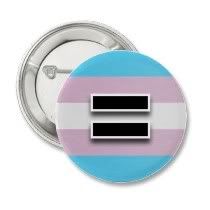 George Brown is a psychologist who served 12 years in the US Air Force and worked for 13 years in the Department of Veterans Affairs. Back in 1988 he wrote a paper entitled Transsexuals in the Military: Flight into Hypermasculinity (pdf). A copy of that paper was present in Bradley Manning’s housing unit, according to testimony at his Article 32 hearing.
George Brown is a psychologist who served 12 years in the US Air Force and worked for 13 years in the Department of Veterans Affairs. Back in 1988 he wrote a paper entitled Transsexuals in the Military: Flight into Hypermasculinity (pdf). A copy of that paper was present in Bradley Manning’s housing unit, according to testimony at his Article 32 hearing.
To be a boy is to be macho, to have weapons, to be a fighter, and to kill, at first in play, then maybe later in a war.
–John Money, 1980
In that paper Brown speculated that male-to-female transgender enlist in the services as a way of “purging their feminine self”.
Current military policies, in association with the proposed hypermasculine phase of transsexual development, may actually result in a higher prevalence of transsexualism in the military than in the civilian population.
–Brown, 1988
Brown claims to have new research data to support that thesis.
I have data from a study I did in VA that demonstrates a prevalence double that in the nonmilitary population. It is unpublished data, pending presentation in San Francisco in the fall. It totally supports my 1988 work. The denominator in the study is over 5 million veterans. So, I am now confident that my early theory was correct.
–Brown, 2012
The 2009 Report of the APA Task Force on Gender Identity and Gender Variance estimated that 1 in 10,000 biological males and 1 in 30,000 biological females were transsexual, while 2-3% of biological males engage in some form of cross-dressing. The report did not speculate on the number of non-transsexual transgender people. In his 1988 paper, Brown used different figures, namely those of Laura Giat Ruberto from the Archives of Sexual Behavior which estimated that transsexualism has an incidence in males of between 1 in 37,000 and 1 in 100,000.
Brown is a current member of the World Professional Association for Transgender Health (WPATH).
People who oppose transgender rights and LGBT rights more broadly would have you believe that there’s no such thing as transgender troops.
–Aaron Belkin, director of the Palm Center
Belkin has a new book out, Bring Me Men: Military Masculinity and the Benign Facade of American Empire 1898-2011.
I wrote the book to apologize for the activist work that I had done to repeal “don’t ask, don’t tell.” The repeal strategies that I pursued required me to glorify the military as well as American foreign policy more broadly.
This, in turn, added to the ever-increasing militarization of American culture and politics. Yes, the military and the troops deserve our respect. But when respect turns into unthinking glorification, that’s dangerous.
Bring Me Men is a critique of that process of adulation, and an apology for the ways in which I contributed to militarization in pursuit of repeal.
Warrior identity and military masculinity are so revered in this society that people will do whatever it takes, including dying, for people to prove that they are ‘real men,’ The fact that many [male-to-female] transgender individuals join the military to prove that they are ‘real men’ is a sad testament to the culture’s idealization of warrior masculinity.
Transgender troops should be allowed to serve because that’s what’s good for the military, and that’s what’s democratic, not because they join at higher or lower rates.
–Belkin
DoD regulations don’t allow transgender individuals to serve in the military, based upon medical standards for military service.
–Eileen Lainez, Pentagon spokesperson
The Servicemembers Legal Defense Network has a page on the status quo. The National Center for Transgender Equality also has a page.
Brown’s 1988 paper reported that the Air Force judge advocate general (JAG) office questioned that position.
The short of the matter seems to be that if we propose to base the policy of discharging members who undergo sex change operations on promotion of good order, discipline, morale, or other similar virtues, we must prepare for a challenge on the ground that there is no empirical evidence that transsexuals have an adverse impact on those values.
–JAG, 1984
Transpeople are allowed to serve in the military in Canada, New Zealand, Norway, Israel, Spain, Thailand, and Australia. Belgium, the Netherlands and Brazil appear to allow service under certain restrictions.
Canada lifted its ban in 1992.
It was at the time and it continues to be a complete nonissue. We have openly gay members of the CF [Canadian Forces]. They’re very open about their identity. They’re open about their partners.
But cultural taboos still make it difficult to prove this integration through empirical studies.
Members of the Canadian Forces want to be judged by one criterion only: Can you do the job?
Asking a Canadian soldier about sexual and gender identity in such an environment would be perceived as unnecessary and intrusive research.
“Don’t put a 1,000-watt spotlight on this part of my identity. Being gay, or being aboriginal, that doesn’t define me. That is an important part of who I am, but understand me as a whole person.”
–Alan Okros, Canadian Forces College

1 comments
Author
…into the military and I’d do anything to help someone else avoid service, but if people choose to serve, they should not be denied because they are transgender.
My 2 kopeks.